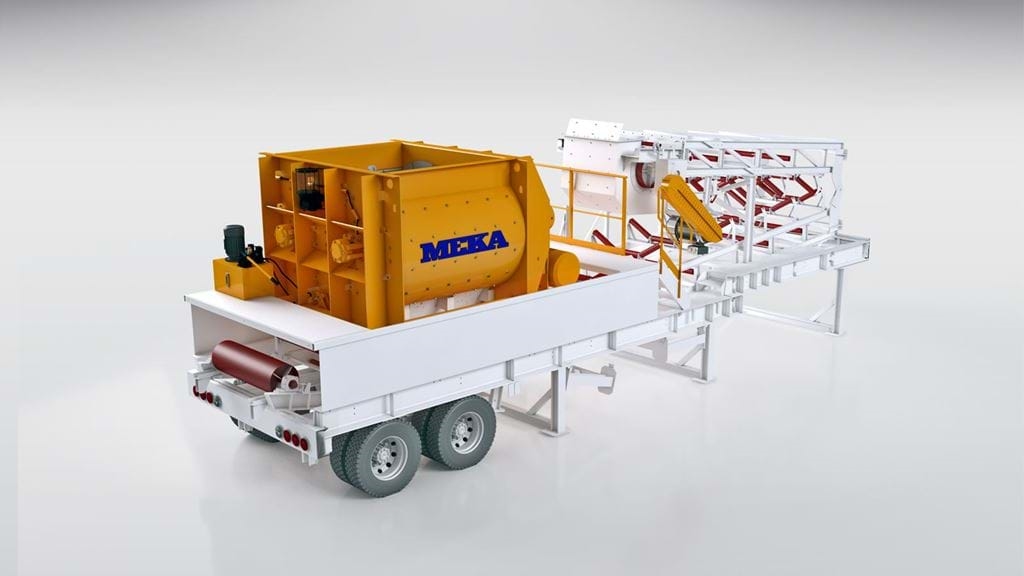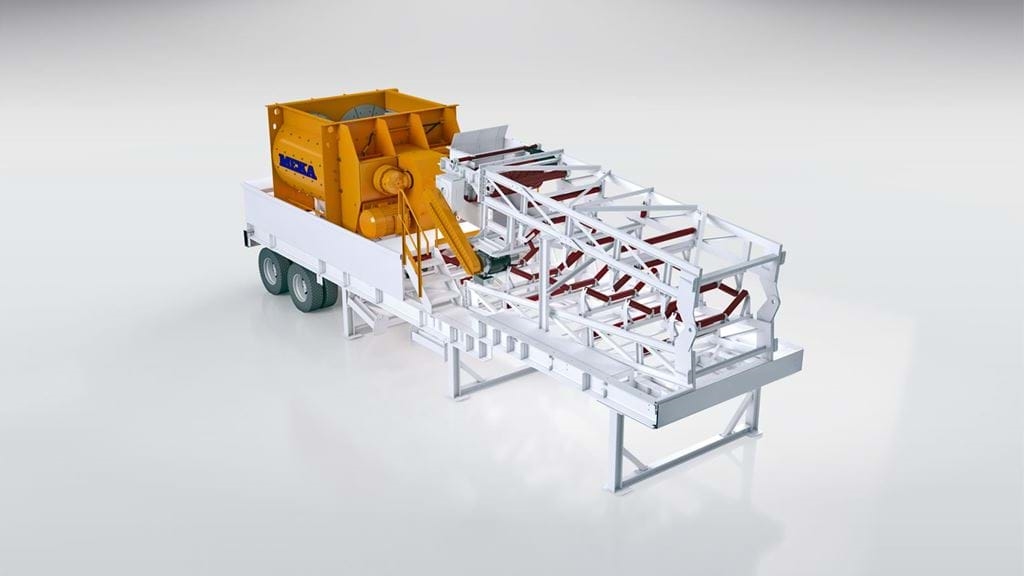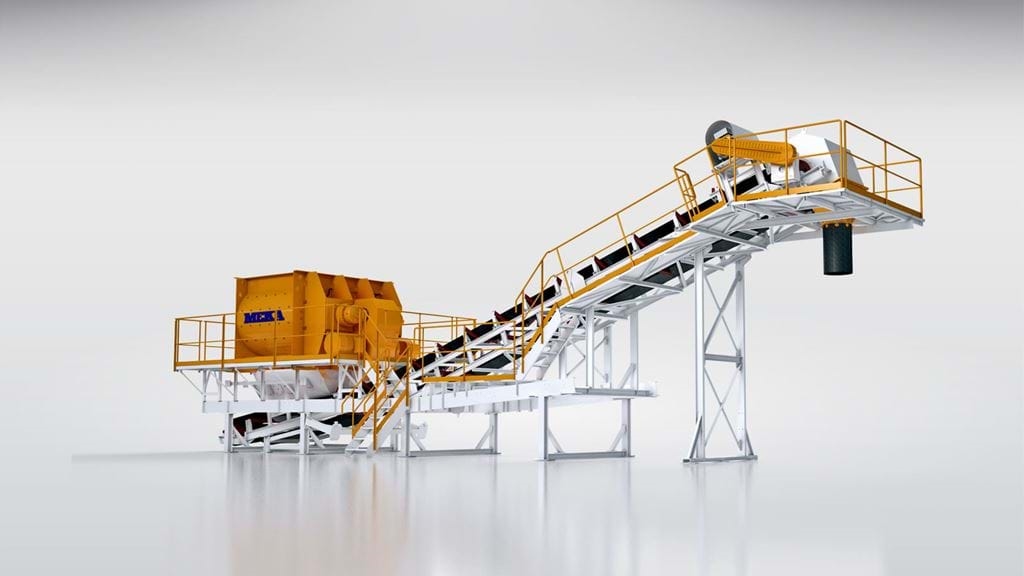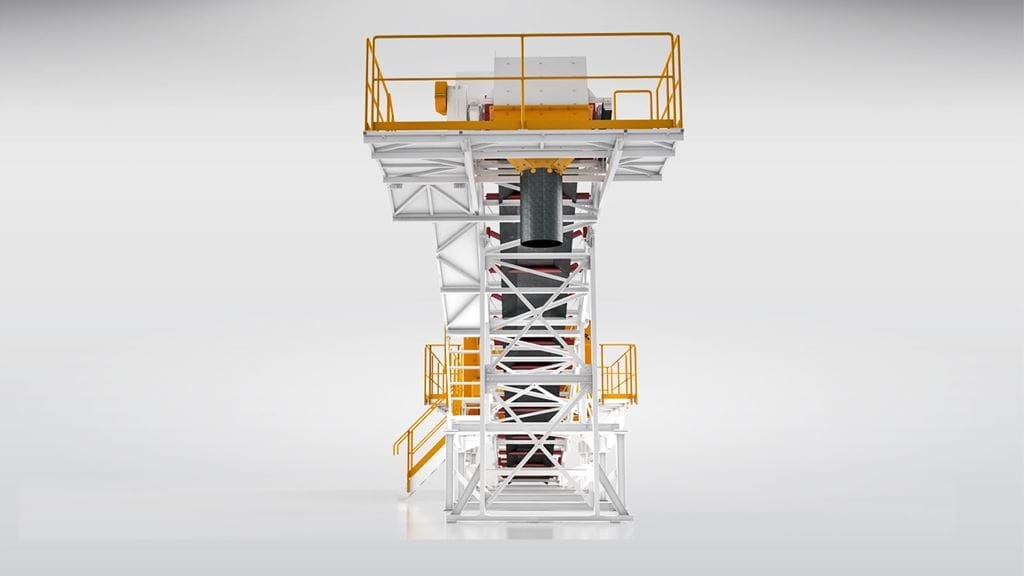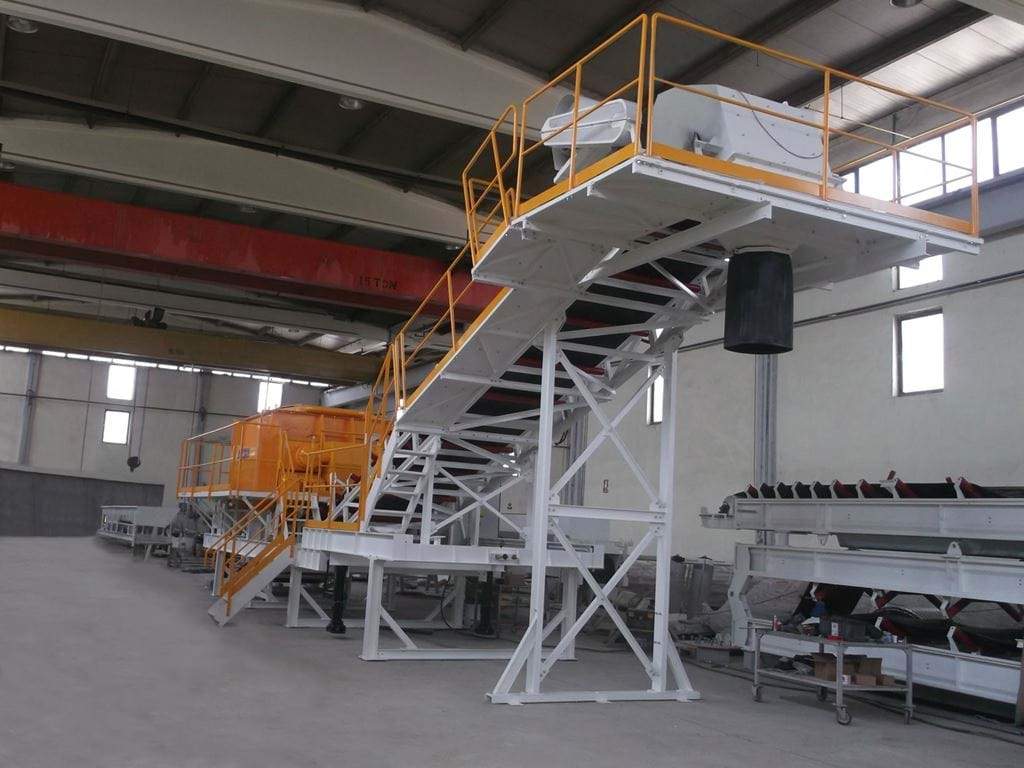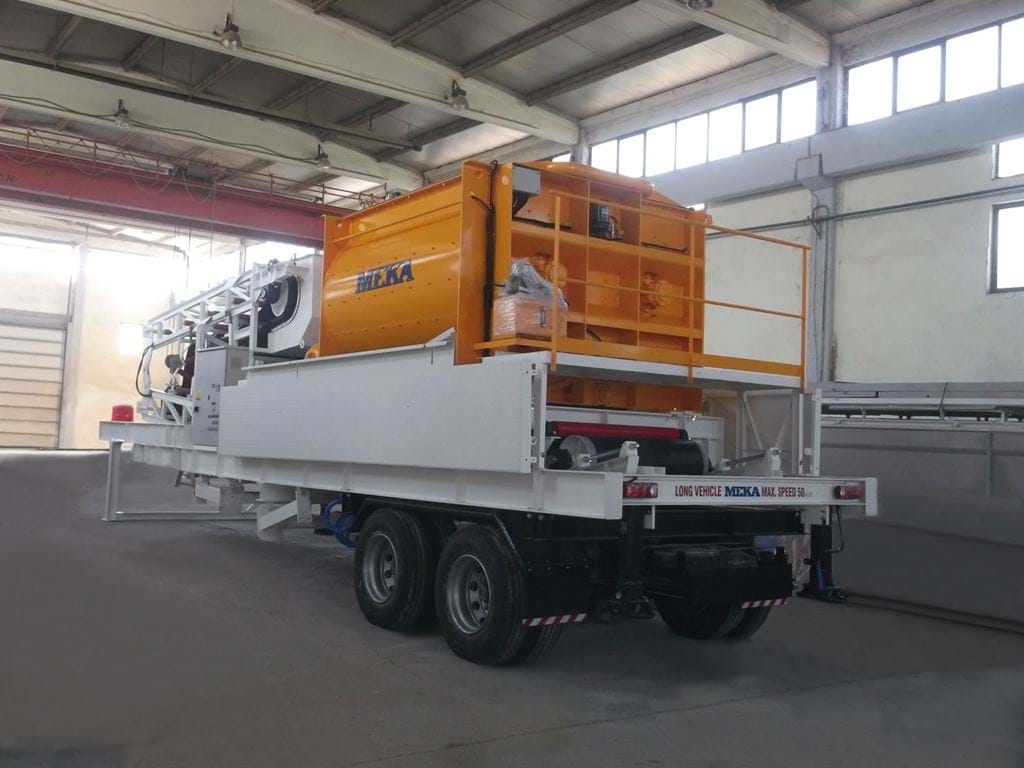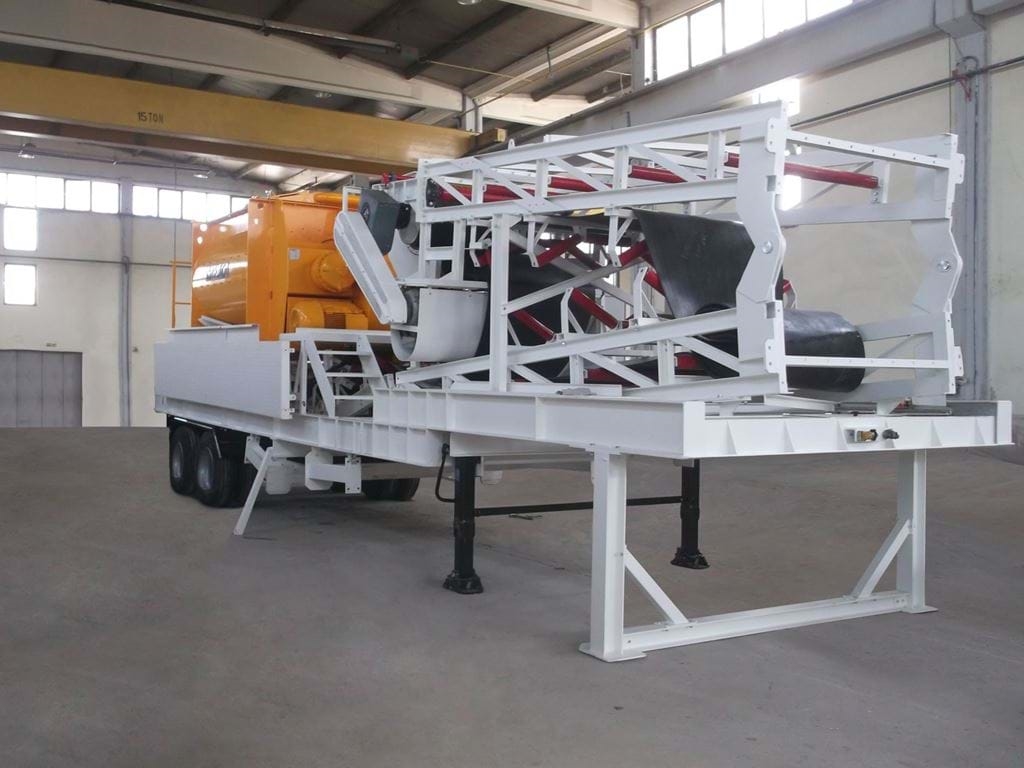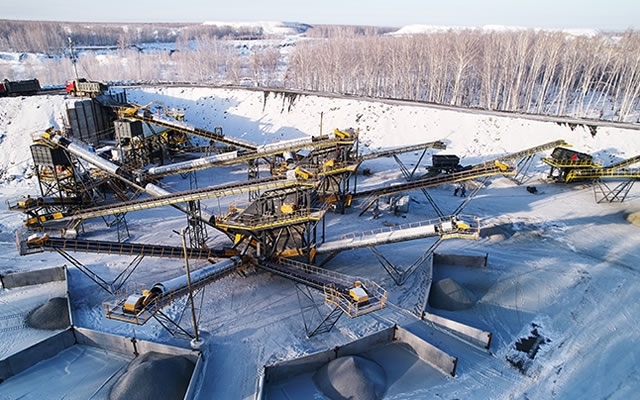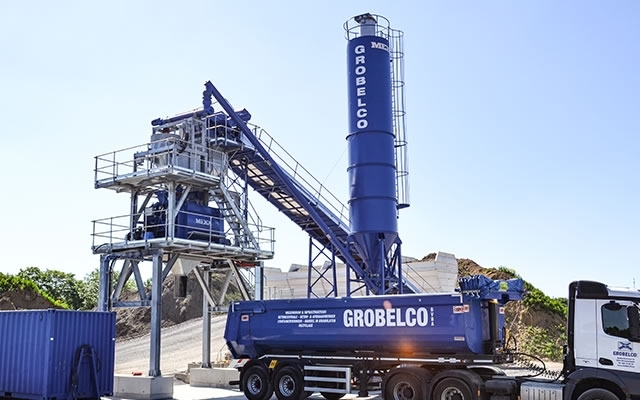A concrete mixer is a piece of equipment used to create a homogeneous concrete mixture. Concrete mixers typically use a rotating drum or a mixing cylinder. This rotating system allows materials such as cement, sand, water, and aggregate to mix together and form concrete. The mixer’s rotational movement ensures a uniform mix and helps produce high-quality concrete.
-
PRODUCTS
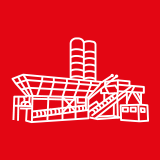
-
Ready Mix Concrete Plants
- READY MIX CONCRETE PLANTS HOME
- MOBILE CONCRETE BATCHING PLANTS
- COMPACT CONCRETE BATCHING PLANTS
-
STATIONARY CONCRETE BATCHING PLANTS
- STATIONARY CONCRETE BATCHING PLANTS HOME
- K60 STATIONARY CONCRETE BATCHING PLANT
- K90 STATIONARY CONCRETE BATCHING PLANT
- K120 STATIONARY CONCRETE BATCHING PLANT
- K135 STATIONARY CONCRETE BATCHING PLANT
- K145 STATIONARY CONCRETE BATCHING PLANT
- K160 STATIONARY CONCRETE BATCHING PLANT
- K200 STATIONARY CONCRETE BATCHING PLANT
- DRY BATCH CONCRETE BATCHING PLANTS
- PRECAST CONCRETE BATCHING PLANT
- RCC CONCRETE BATCHING PLANTS
- Concrete Mixers
- Concrete Plants Components
-
After Sales Services and Spare Part
-
Concrete Batching Plant Automation System


Crushing & Screening Plants, Mining, Robust, Reliable, Robust, Reliable, Robust for Ready-Mixed Concrete Production and Recycling Industries.... -
Ready Mix Concrete Plants
- CORPORATE
- NEWS
- BLOG
- CASESTUDIES
- SERVICE
Mobile Twin Shaft Concrete Mixers
MEKA Mobile Twin Shaft Mixers are perfectly designed for adopting to stationary Dry Batch. Having a mobile allows for manufacturing of high-grade, low slump like RCC or Road when necessary. It is a great solution for temporary needs.
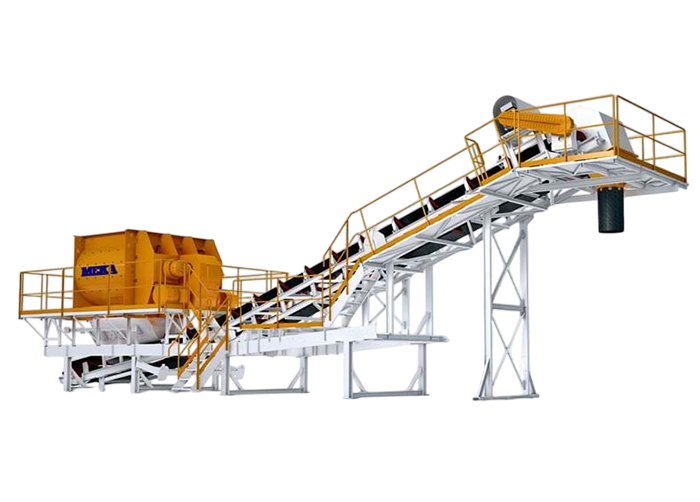
Mobile Twinshaft at a Glance
If you are reading this article on our MEKA web-site we assume you have a dry batch and you are seeking for a solution about how to convert it to wet one. You have already inspected several projects and found some articles, which include long-term complete transformation of the existing plant with changing the length of the belt conveyors, making new structure for platform with highly expensive labor and other related issues. You have come to the right place as we have a solution.
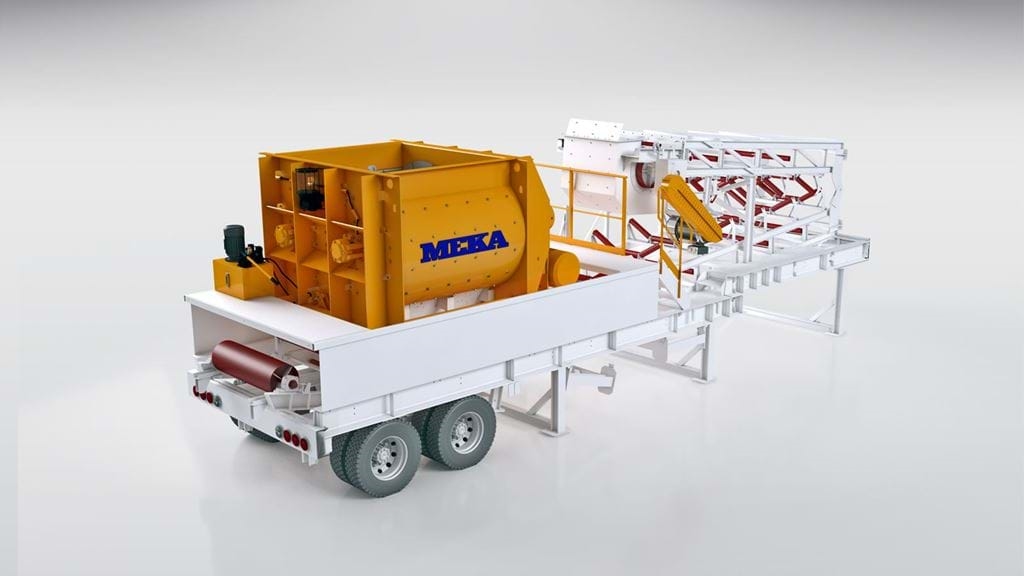
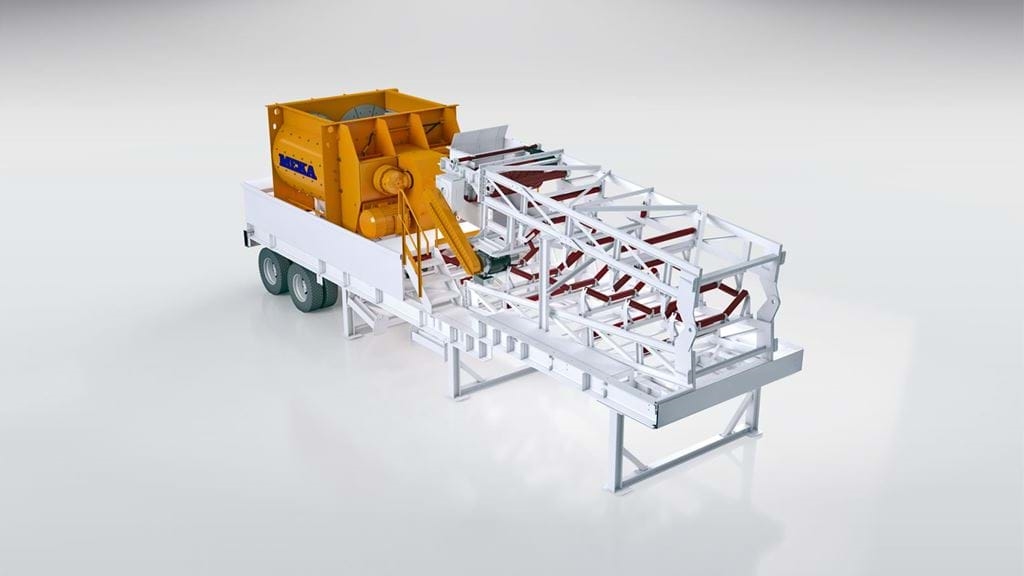
Why Mobile Twinshaft
With low profile MEKA Mobile it is possible to convert a typical dry-batch into a wet-batch almost without any modifications to the existing structure. Along with easy transport and fast installation this new setup gives more manufacturing flexibility with different high quality mix designs such as RCC (Roller Compacted ), Zero slump (for ex. road applications), SCC (Self Compacted ) and others. 5 different capacities were developed to suit our customers’ needs in the best possible way. Technical specifications and features are described below.
MTW-2000 |
MTW-3000 |
MTW-3500 |
MTW-4000 |
MTW-4500 |
|
| Conveyor Type | Twin Shaft | ||||
| Feeding Capacity | 3.000 lt | 4.500 lt | 5.250 lt | 6.000 lt | 6.750 lt |
| Compacted Feeding Output | 2.000 lt | 3.000 lt | 3.500 lt | 4.000 lt | 4.500 lt |
| Conveyor Motor Power | 2x37 KW | 2x55 KW | 2x75 KW | 2x75 KW | 2x90 KW |
| Conveyor Belt | 1.200 x 16.000 mm | ||||
| Belt Motor Power | 30 kW | 30 kW | 30 kW | 45 kW | 45 kW |
| Total Motor Power | 105 kW | 140 kW | 180 kW | 195 kW | 225 kW |
-
Mobile Twin Shaft Concrete Mixers Downloadable Files
Concrete mixers are essential equipment in the construction industry, enabling the rapid and efficient mixing of concrete. These mixers ensure a homogeneous blend of concrete, contributing to the production of high-quality and durable concrete on construction sites. They are commonly used in concrete production plants and construction sites for transporting and pouring concrete.
Concrete mixers are available in various capacities and can be adapted to meet different project needs, from large-scale construction projects to smaller applications. Typically, mixers have capacities ranging from 4 m³ to 10 m³, but some models may have smaller or larger capacities depending on specific requirements.
Concrete mixers are widely used in the construction industry. They are essential in various projects, from residential buildings to infrastructure works, road construction projects, and commercial buildings. Concrete mixers are indispensable on construction sites, especially for concrete pouring processes. They are also frequently used in concrete production plants.
The capacity of concrete mixers typically ranges from 4 m³ to 10 m³. However, with custom designs, smaller or larger capacity mixers can also be produced. The mixer capacity is determined based on the scale of the construction project and the daily concrete requirement. Smaller capacity mixers are sufficient for small projects, while higher-capacity mixers are preferred for larger projects.
Regular maintenance of concrete mixers is essential for ensuring their long lifespan and efficient operation. The drum and motor should be inspected and cleaned regularly. After each mixing process, any remaining concrete should be removed, and surfaces should be lubricated. Additionally, gears, tires, and other moving parts should be periodically checked and replaced or lubricated if necessary. Following the manufacturer’s maintenance guidelines helps keep the mixer operating efficiently.
The decision to rent or buy a concrete mixer depends on the size and duration of the project. For short-term projects, renting a concrete mixer may be more cost-effective. However, for long-term or large-scale projects, purchasing a mixer can be more economical. Buying ensures continuous availability and maintenance control, whereas renting is a better option if you need the mixer for a limited period and want to avoid maintenance responsibilities.

